My Tooth Cracked Under a Crown: Your Ultimate Guide
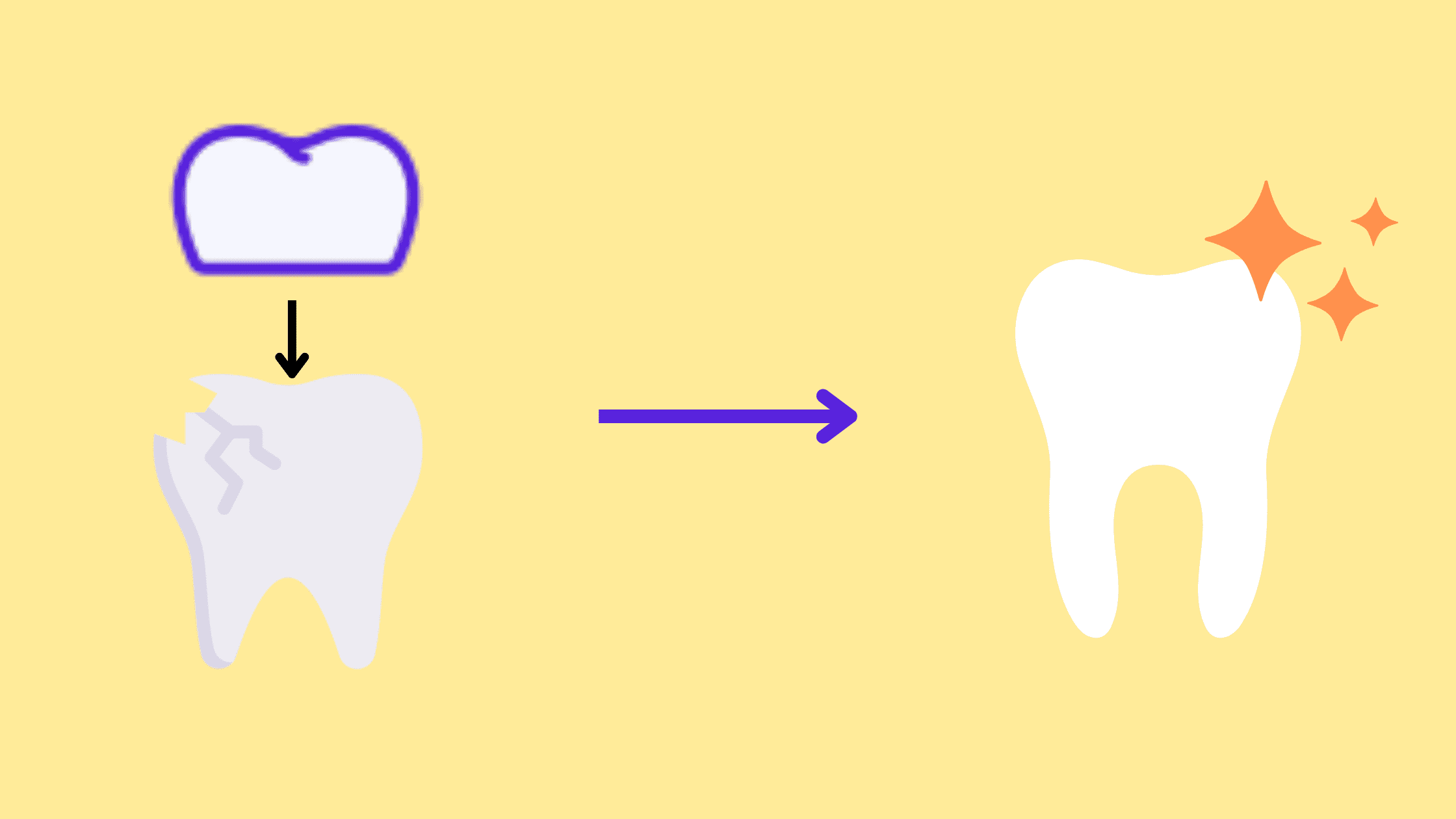 Imagine this: you're enjoying your favorite food or drink when suddenly, a sharp pain jolts through your mouth. Something feels off.
Imagine this: you're enjoying your favorite food or drink when suddenly, a sharp pain jolts through your mouth. Something feels off.
After a visit to the dentist, you receive the news: you have a cracked tooth under a crown.
It's a situation that raises many questions. How did it happen? Can it be fixed? Will you lose your tooth?
Don't worry, because, in this article, we'll explore the world of cracked teeth hidden beneath crowns. We'll uncover the causes, possible symptoms, and most importantly, the treatment options available to restore your smile.
1. Why are crowned teeth more prone to cracking?
2. How can the crack progress under a crown?
3. Can a cracked tooth under a dental crown be saved?
4. What are the symptoms to watch for?
5. Tools the dentist can use to diagnose a crack or fracture under a crown:
6. The potential complication if the crack is left untreated:
7. How to prevent a crowned tooth from cracking or breaking off?
Why are crowned teeth more prone to cracking?
A crown is a type of dental restoration that covers the entire tooth. It can help protect the tooth from further damage and restore its function and appearance for many years. However, a crowned tooth is not immune to problems.Sometimes, a crowned tooth can develop a fracture or a crack that can compromise its integrity and cause pain or sensitivity.
Why does this happen? The answer is not the crown itself but the underlying tooth condition.
In most cases, a tooth needs a crown because it has been severely damaged by decay or trauma. This means that the tooth has lost a lot of its natural structure and strength in the first place. Therefore, it can no longer withstand the forces of chewing and biting as well as a healthy tooth.
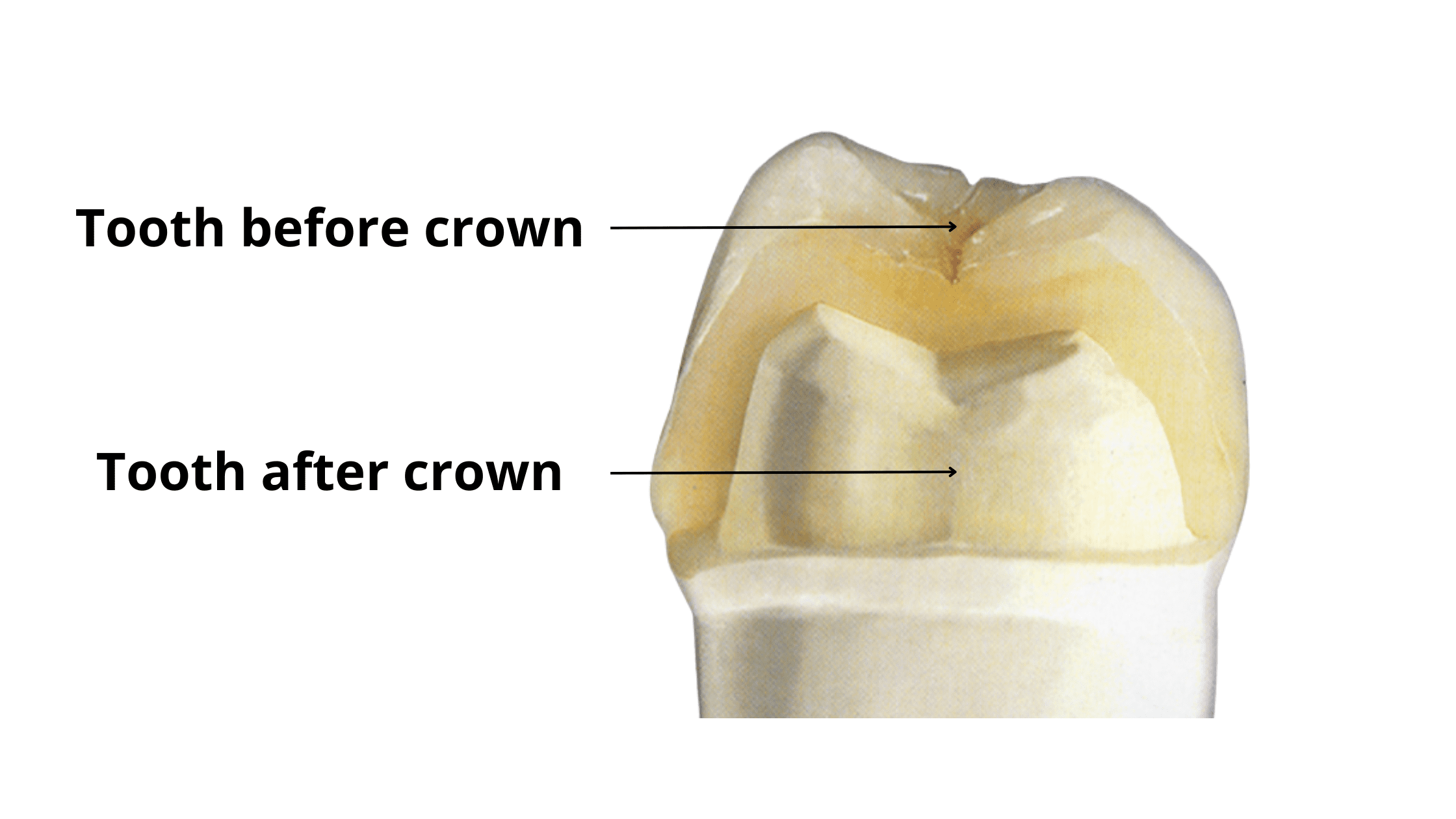
This problem is even more pronounced if the tooth has been infected and treated with root canal therapy.
A root canal removes the nerve and blood vessels from the tooth, making it more brittle and prone to cracking. To prepare the tooth for a crown, the dentist has to shape and trim it, which may weaken it further.
Therefore, a crowned tooth is more likely to crack if it has been severely damaged or infected before. Some factors that can increase the risk of cracking are:
- Biting on hard objects, such as ice, nuts, or bones
- Grinding or clenching the teeth, especially at night
- A blow or impact to the mouth, such as from a fall or an accident
- Having a poorly fitted or loose crown that does not support the tooth properly
How can the crack progress under a crown?
A crack under the crown is often hard to spot. This is because it usually starts as a tiny, invisible line in the tooth structure. Like a crack in a windshield, it can progress slowly over time and only become visible when it widens or extends deeper into the tooth.In addition, the injury is frequently concealed beneath the crown, making the situation more challenging.
Initially, you may not experience any noticeable sensations or discomfort. However, as time goes by, months or even years later, the crack may gradually advance, leading to painful symptoms.
Different types of cracks can affect a tooth under a crown. These include:
1. Fractured cusp:
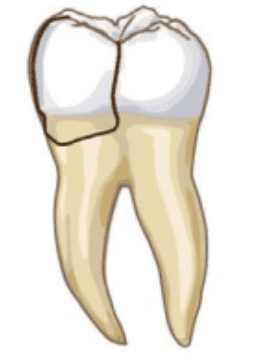
This is when a part of the chewing surface of the tooth breaks off. It may not cause much pain or sensitivity, but it can affect your bite and make your tooth more prone to decay. You may need a new crown to repair the fracture.
2. Cracked tooth syndrome:
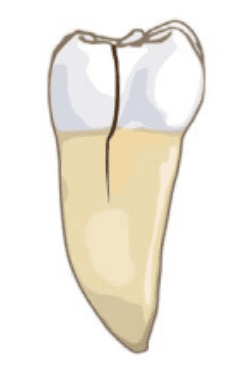
This is when a crack runs from the top of the tooth towards the root. It may cause sharp pain when biting or chewing. It may also cause sensitivity to hot, cold, or sweet stimuli.
3. Split tooth:
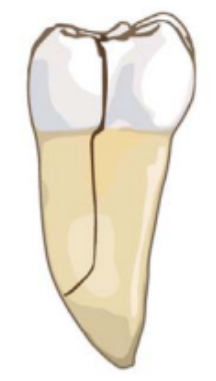
This is when a crack splits the tooth into two separate parts. It usually causes severe pain and infection. Most often, the tooth cannot be saved and must be extracted.
4. Vertical root fracture:
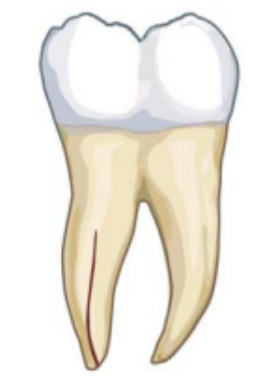
This is when a crack starts from the root and goes upwards towards the crown. Here too, extraction is often the only option.
Can a cracked tooth under a dental crown be saved?
If you have a cracked tooth under a dental crown, you may be wondering if it can be fixed or if you will lose your tooth.The good news is that when caught in time, the cracked tooth can be repaired and saved. Here is what you need to know about this situation.
When your dentist notices a crack in your tooth, the first thing they will do is remove your crown. This will allow them to examine the extent of the damage and determine the best course of action. The most important factor is whether the crack reaches the roots of your tooth or not.
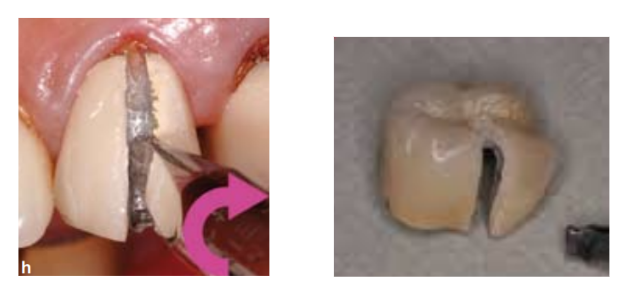
Removing a dental crown by cutting it
If the crack is only on the surface of your tooth and does not affect the roots, then your chances of saving your tooth are very high. Your dentist will clean and reshape your tooth and then place a new crown over it. The new crown will protect your tooth from further damage and restore its function and appearance.
However, if the crack extends to the roots of your tooth, then the situation is more complicated. There's a good chance that the tooth will have to be removed.
The picture below is a crowned tooth that started showing signs of infection.
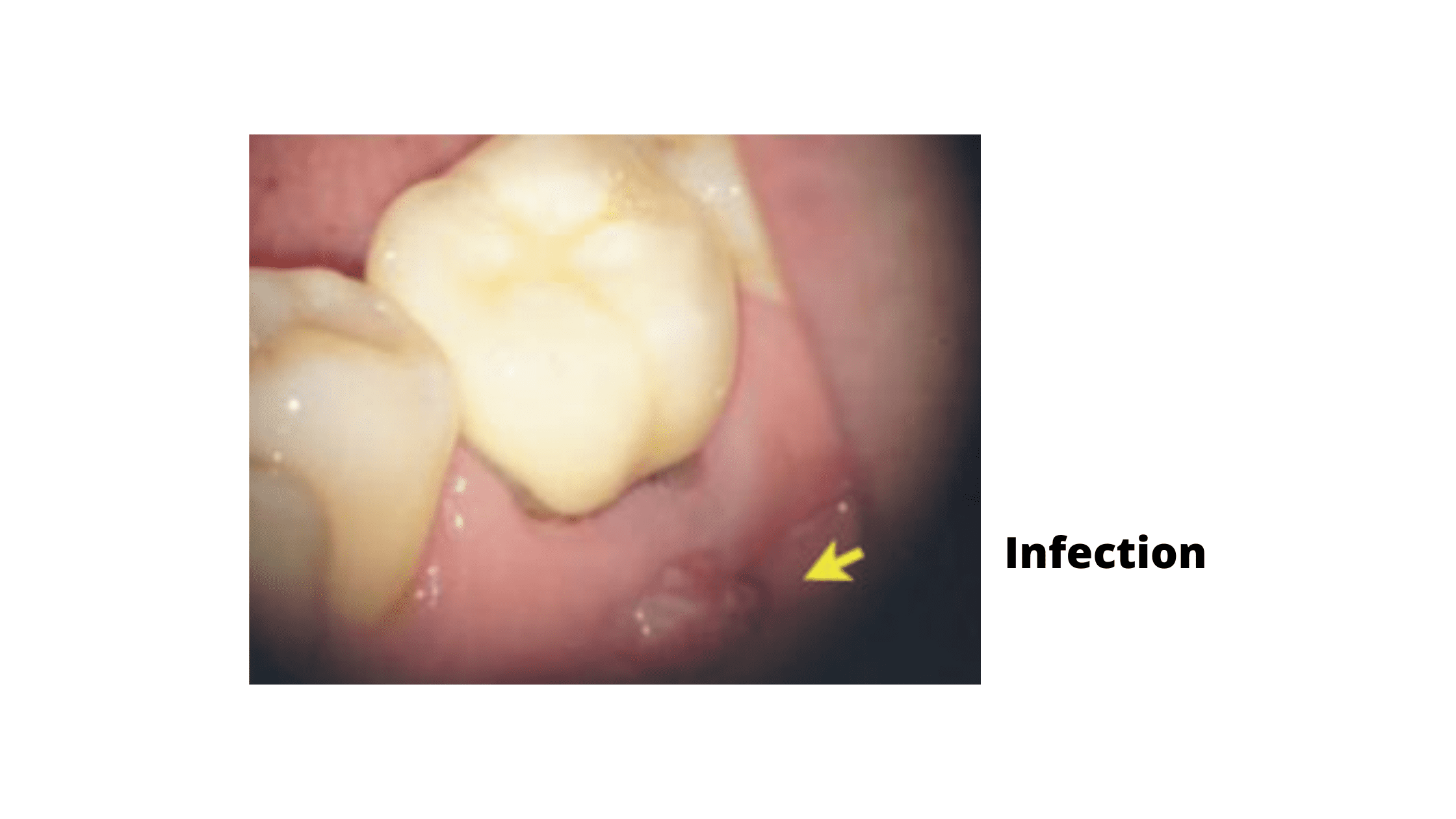
When the tooth was removed, you can definitely see a large vertical crack in the root!
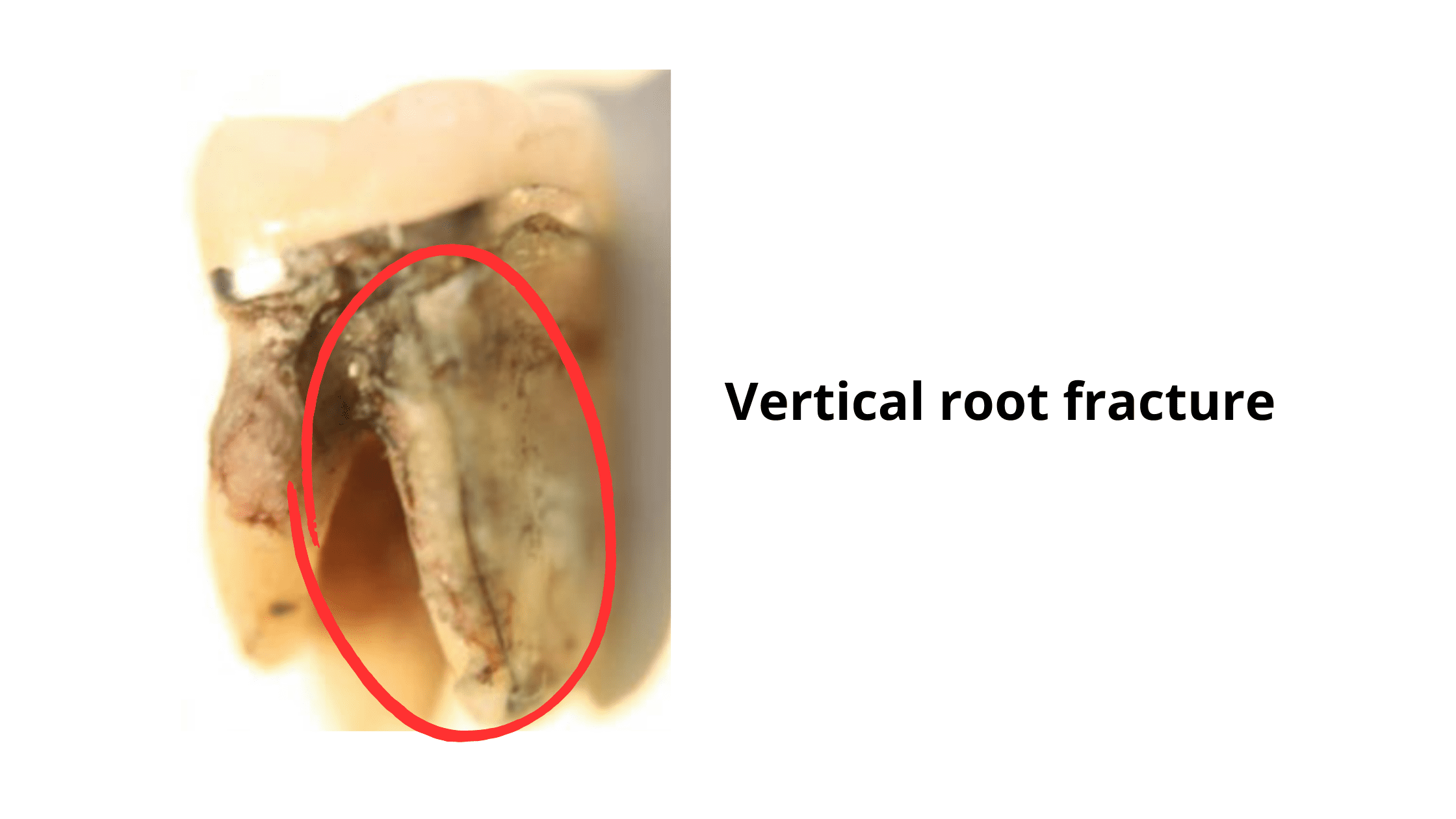
These vertical root fractures are tough to spot, making them tricky to diagnose. They are also one of the most common causes of tooth extraction (3). This is because they are not repairable and often lead to gum infections.
What are the symptoms to watch for?
Again, cracks in your teeth can be hard to notice at first. You may not feel any pain or discomfort. But that doesn't mean the fracture is not there. Some signs to look out for:- Sharp pain when you bite down or chew on something
- Sensitivity to hot or cold foods and drinks
- Darkening of the tooth or the crown
- Swelling, tenderness, or bleeding of the gum around the tooth
- Loose or ill-fitting crown
If you notice any of these symptoms, don't wait to see your dentist. The sooner you get treatment, the better the chances of saving your tooth and preventing further damage.
Tools the dentist can use to diagnose a crack or fracture under a crown:
To diagnose a crack or fracture under a crown, your dentist may use one or more of the following tools:- Dental dye: This is a special liquid that stains the cracks on your tooth, making them more visible to the dentist.
- Bite test: This is a simple test where you bite down on a piece of plastic or cotton and then release it. If you feel pain when you release, it may indicate a crack in your tooth.
- Remove your crown: Sometimes, the only way to see the crack is to remove the crown and examine the tooth underneath.
- Periodontal probing: This is a thin metal instrument that your dentist uses to measure the depth of the pockets between your gums and teeth. If you have a crack under your crown, the space between your tooth and the gum may become larger.
- Tooth sensitivity tests: These are tests that check how your tooth reacts to hot, cold, sweet, or sour stimuli. A cracked tooth may be more sensitive than a healthy tooth.
- X-rays: These are images that show the inside of your teeth and bones. X-rays can help your dentist see if there is any damage to the pulp or root of your tooth.
The potential complication if the crack is left untreated:
If left untreated, the crack can lead to serious problems that may affect your oral health and overall well-being. Some of the potential complications of a cracked tooth are:- Tooth decay: Bacteria can enter the crack and cause decay inside the tooth. This can damage the pulp, which is the soft tissue that contains nerves and blood vessels.
- Tooth infection: If the pulp becomes infected, you may experience severe pain, swelling, and sensitivity. The infection can also spread to the bone and surrounding tissues, causing an abscess (a pus-filled pocket).
- Gum infection: A crack can also allow bacteria to infect the gums around the tooth. This can cause gum disease. You may notice symptoms like swelling, bleeding, and gum abscess.
- Split tooth: A crack can worsen over time and cause the tooth to split into two or more pieces. This can make it impossible to save the tooth with a crown or a filling.
- Tooth loss: If a cracked tooth is not treated in time, you may lose the tooth completely. This can affect your appearance, speech, chewing ability, and self-confidence. It can also cause your other teeth to shift and create gaps or bite problems.
How to prevent a crowned tooth from cracking or breaking off?
Here are some tips to prevent a crowned tooth from cracking or breaking off:- Avoid biting or chewing on hard foods, such as ice, candy, popcorn kernels, or bones. These can damage the crown and the underlying tooth structure.
- Wear a mouthguard if you play contact sports or grind your teeth at night. This can protect your teeth and crowns from trauma and excessive wear.
- Maintain good oral hygiene by brushing twice a day and flossing daily. This can prevent plaque and bacteria from building up around the crown and causing decay or infection.
- Visit your dentist regularly for check-ups and cleanings. Your dentist can monitor the condition of your crown and detect any signs of damage or looseness. They can also repair or replace your crown if needed.
- Endodontic Diagnosis Pathology and Treatment Planning Mastering Clinical Practice by Bobby Patel
- Vertical root fractures and their management https://www.ncbi.nlm.nih.gov/pmc/articles/PMC4001262/
- New Approach in the Management of Vertical Root Fracture with the Help of Biodentine and CBCT https://www.ncbi.nlm.nih.gov/pmc/articles/PMC7509562/
- An interdisciplinary approach to treat crown-root-fractured tooth https://www.ncbi.nlm.nih.gov/pmc/articles/PMC3821233/
- Endodontie Principes et pratique - Mahmoud TORABINEJAD, Richard E. WALTON, A. FOUAD, Gérard LéVY
- Savoir détecter les fêlures et les fractures verticales https://www.sop.asso.fr/admin/documents/supportfic/FDC0000009/SOP_Guide.pdf
- Novel Matricing Technique for Management of Fractured Cusp Conundrum – A Clinician’s Corner https://www.ncbi.nlm.nih.gov/pmc/articles/PMC4866268/
